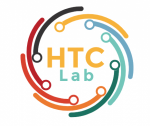Recent advancements in large-scale models, such as GPT-4, have showcased remarkable capabilities in addressing standard queries. However, when facing complex problems that require multi-step logical reasoning, their accuracy dramatically decreases. Current research has explored the realm of prompting engineering to bolster the inferential capacities of these models. Our paper unveils a pioneering prompting technique, dubbed Graph of Thoughts (GoT). Through testing ona trio of escalating challenges: the 24-point game, resolution of high-degree polynomial equations, and derivation offormulas for recursive sequences, our method outperformedGPT-4, achieving accuracy improvements of 89.7%, 86%,and 56% for each respective task. Moreover, when juxtaposedwith the state-of-the-art (SOTA) prompting method, Tree ofThought (ToT), our approach registered an average accuracy boost of 23%, 24%, and 15%.
Latest posts by Ryan Watkins (see all)
- Limitations of the LLM-as-a-Judge Approach for Evaluating LLM Outputs in Expert Knowledge Tasks - June 7, 2025
- Neural and Cognitive Impacts of AI: The Influence of Task Subjectivity on Human-LLM Collaboration - June 5, 2025
- From Lived Experience to Insight: Unpacking the Psychological Risks of Using AI Conversational Agents - May 30, 2025
